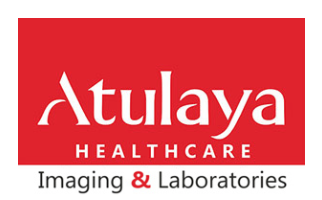Can PET-CT Scans Detect Cancer? – Understanding the Role of PET-CT in Cancer Diagnosis
A positron emission tomography (PET) scan is an imaging procedure that can assist in determining how your tissues and organs operate metabolically or biochemically. A radioactive substance (tracer) is used in the PET scan to display both regular and aberrant metabolic activity. Before a sickness manifests itself on another imaging test, such as a computed tomography (CT) scan or magnetic resonance imaging (MRI), a PET scan may frequently detect the aberrant metabolism of the tracer in disorders (MRI).
Most frequently, the tracer is injected into a vein in your hand or arm. The tracer will then gather in your body’s regions with greater degrees of metabolic or biochemical activity, which frequently identifies the disease’s location.
PET-CT or PET-MRI scans are the terms used to describe the combination of PET pictures with CT or MRI. A PET scan is a useful tool for diagnosing a number of illnesses, such as cancer, heart disease, and brain abnormalities. This information can be used by your doctor to aid with condition diagnosis, monitoring, or treatment.
Cancer
Due to their faster metabolic rate than normal cells, cancer cells appear as bright spots on PET scans. PET exams may be helpful in:
Cancer Detection
- If your cancer has spread, being honest about it
- determining the efficacy of cancer therapy
- A cancer recurrence being discovered
Noncancerous illnesses can mimic cancer, and certain malignancies do not show up on PET scans, therefore it is important to interpret them carefully.
Many types of solid tumors can be detected by PET-CT and PET-MRI scans, including:
- Brain
- Breast
- Cervical
- Colorectal
- Esophageal
- Head and neck
- Lung
- Lymphatic system
- Pancreatic
- Prostate
- Skin
- Thyroid
Heart condition
Areas of the heart with reduced blood flow can be identified using PET imaging. This knowledge can assist you and your doctor in making decisions, such as whether you would benefit from coronary artery bypass surgery or an angioplasty to clear blocked heart arteries.
Mental illnesses
Certain brain conditions, such as tumours, Alzheimer’s disease, and seizures, can be assessed using PET scans.
Risks
A radioactive substance (tracer) will be injected into a vein prior to your PET scan. The danger of radiation side effects is limited because the tracer exposes you to a little quantity of radiation. However, the tracer could
- Radiation exposure to your unborn child if you are expecting
- You should not expose your infant to radiation if you are nursing.
- cause an allergic response, despite the rarity of this
- Ask your doctor about the advantages and disadvantages of a PET scan.
How you prepare
Tell your physician:
- Having experienced a severe allergic reaction
- If you’ve recently been ill or have another health issue, like diabetes,
- If you use any vitamins, herbal supplements, or prescription drugs
- If you believe you could be pregnant or are currently pregnant
- if you are a nursing mother
- If you’re anxious about closed doors (claustrophobic)
You’ll receive comprehensive instructions from your doctor on how to get ready for your scan. It is recommended to refrain from vigorous exercise for a few days before to the research and to cease eating four hours before the scan as a general rule.
What you can expect
Similar to CT or MRI scanners, the PET-CT or PET-MRI scanner is a large device that resembles a big doughnut standing upright.
The entire process takes around two hours, and most patients do not need to stay in the hospital overnight. You can be questioned when you show up for your scan to:
- Put on a hospital gown.
- empty your bladder.
The radioactive medication (tracer) is injected by a member of your medical team into a vein in your hand or arm. A transient chilly sensation that travels up your arm is possible. For 30 to 60 minutes, you relax and keep quiet in a recliner as the tracer is taken up by your body.
During the procedure
When you’re ready, you lie on a small, cushioned surface that slips into the doughnut-shaped area of the scanner. You must maintain extreme stillness throughout the scan to prevent blurry images. A PET-CT scan is finished in around 30 minutes, but a PET-MRI scan takes 45 minutes. The device emits clicking and buzzing noises.
The examination is painless. If you have a fear of small areas, you can experience some uneasiness within the scanner. Tell the nurse or technician if you are experiencing any discomfort due to anxiety. He or she could provide a tranquilizer to you.
After the procedure
After the test you can carry on with your day as usual, unless your doctor tells you otherwise. You’ll need to drink plenty of fluids to help flush the tracer from your body.
Results
A doctor specially trained to interpret scan images (radiologist) will report the findings to your doctor.
The radiologist may compare your PET images with images from other tests you’ve undergone recently, such as MRI or CT. Or the PET images may be combined to provide more detail about your condition.
